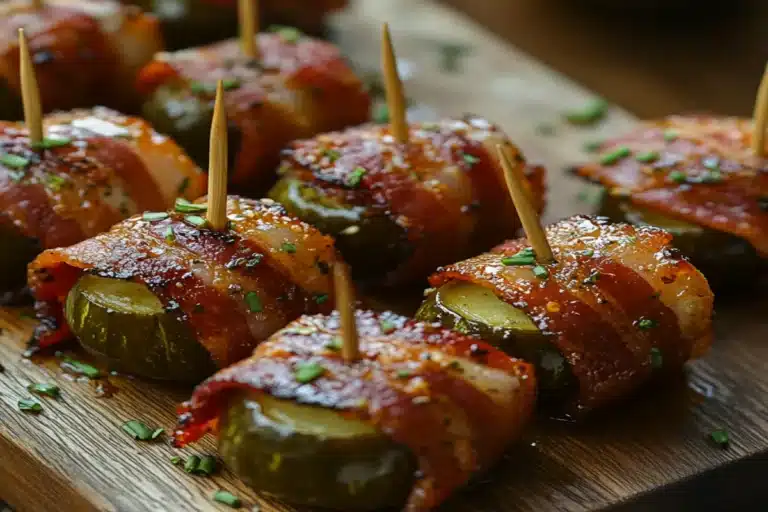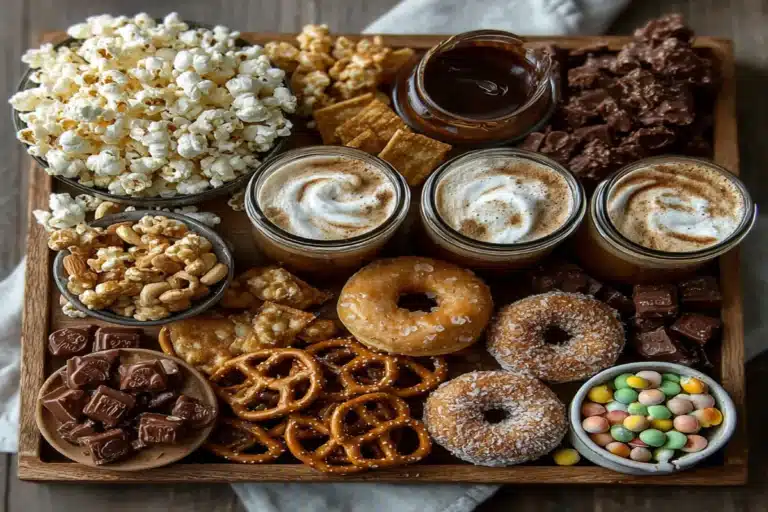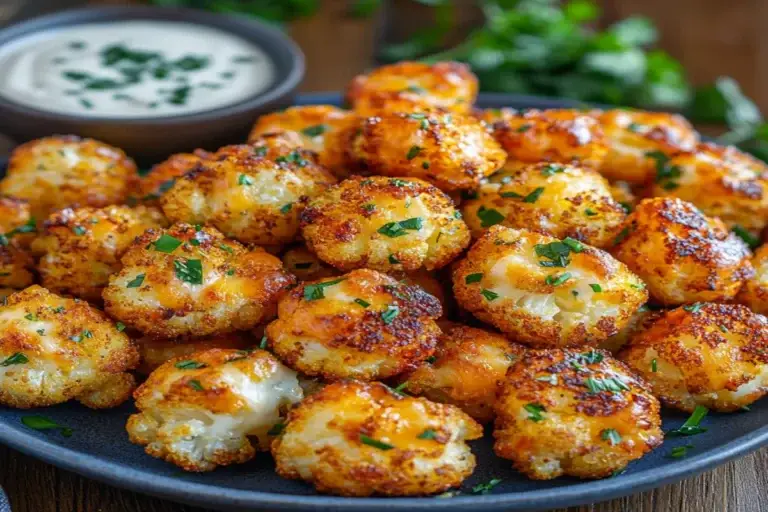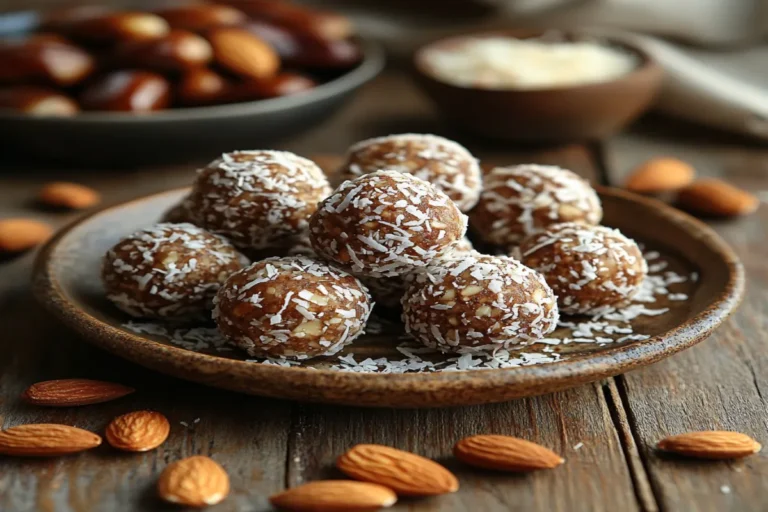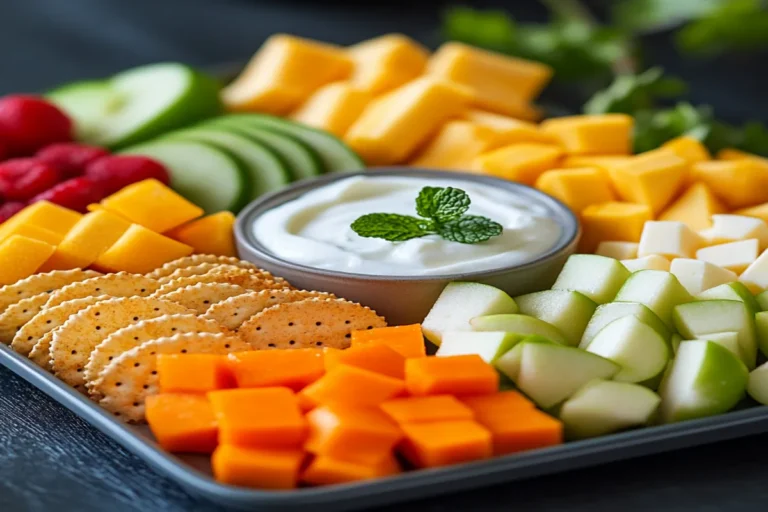Irresistible Cheese & Herb Puff Pastry Pinwheels
Introduction
There’s something magical about the moment puff pastry pinwheels emerge from the oven – golden and flaky layers unfurling to reveal spirals of melted cheese and fragrant herbs. These bite-sized delights manage to be simultaneously elegant and comforting, a rare culinary achievement that makes them a standout option for any occasion. Whether you’re hosting a sophisticated cocktail gathering, looking for crowd-pleasing party appetizers, or simply craving a savory afternoon treat, these versatile pastries deliver satisfaction with minimal effort.
What makes these pinwheels particularly appealing is their remarkable adaptability. The basic technique remains consistent, but the filling possibilities are virtually endless, allowing you to tailor them to seasonal ingredients or personal preferences. In busy times when entertaining demands both style and simplicity, these impressive-looking spirals deliver gourmet results without requiring professional culinary skills.
This guide will walk you through creating perfectly flaky, flavor-packed cheese and herb pinwheels that will disappear moments after hitting the serving plate. With straightforward steps and insider tips, you’ll master this recipe and discover why these pastries have earned their place as a perpetual favorite on tables worldwide.
Table of Contents
What Are Puff Pastry Pinwheels?
Puff pastry pinwheels are precisely what their name suggests – rolled pastries that, when sliced and baked, resemble spiraled pinwheels with distinct layers. They begin as flat sheets of buttery puff pastry spread with savory (or sometimes sweet) fillings, then rolled into logs and sliced into rounds before baking. The heat transforms them into light, airy creations with dozens of delicate, crisp layers that shatter pleasingly with each bite.
These delectable treats have deep European roots, particularly in French and Danish baking traditions where laminated doughs reign supreme. The French palmier (often filled with sugar) represents perhaps the most famous cousin of the savory pinwheel. What began as sophisticated café fare gradually found its way into home kitchens across continents, evolving with regional ingredients and tastes along the journey.
Today’s pinwheels showcase tremendous variety, featuring everything from classic cheese and herb combinations to more adventurous fillings incorporating cured meats, sun-dried tomatoes, olive tapenade, or even sweet options with cinnamon and fruits. The basic technique remains remarkably consistent regardless of filling, making it a versatile recipe worth mastering.
Ingredients Of Puff Pastry Pinwheels
Puff Pastry
The foundation of perfect pinwheels is, without question, the puff pastry itself. While ambitious bakers might attempt homemade versions (requiring a time-intensive process of folding butter into dough repeatedly), high-quality store-bought puff pastry offers convenience without significant compromise. Look for all-butter varieties when possible, as they deliver superior flavor and texture compared to those made with vegetable oils.
Success begins with proper handling. Always thaw frozen puff pastry in the refrigerator overnight rather than at room temperature, which can make the dough sticky and difficult to manage. Work with cold—but not frozen—pastry on a lightly floured surface, and handle it gently to preserve those precious layers that create the characteristic flakiness.
Cheeses
The cheese selection fundamentally shapes your pinwheels’ flavor profile. For classic versions, consider these options:
- Sharp cheddar: Delivers robust flavor that stands up well to baking
- Gruyère: Offers sophisticated nuttiness and excellent melting properties
- Cream cheese or Boursin: Creates a creamy base that holds herbs beautifully
- Parmesan: Provides savory depth when combined with milder cheeses
The best pinwheels often feature a combination—perhaps a spreadable cheese like cream cheese or Boursin as the base layer, topped with a sprinkle of more assertive grated cheese like Parmesan or aged cheddar. Whatever your selection, bring cheese to room temperature before spreading, and grate harder varieties finely for even distribution.
Herbs
Fresh herbs transform ordinary pinwheels into aromatic delights with distinctive character. Consider these classic options:
- Chives: Offer mild onion notes and visual appeal
- Parsley: Provides bright freshness that balances rich cheese
- Thyme: Delivers earthy, slightly floral notes that complement many cheeses
- Rosemary: Makes a bold statement with its piney fragrance (use sparingly)
- Dill: Creates distinctive Nordic-inspired flavor profiles
Always choose fresh herbs when possible, mincing them finely for even distribution. Dried herbs can substitute in a pinch but use them at one-third the quantity of fresh and consider rehydrating them in a teaspoon of olive oil before incorporating.
Additional Fillings
While cheese and herbs create perfectly delicious pinwheels on their own, additional ingredients can elevate them further:
- Caramelized onions: Add sweet depth and complexity
- Roasted red peppers: Provide vibrant color and sweet-savory notes
- Sun-dried tomatoes: Deliver concentrated umami flavor
- Chopped spinach: (thoroughly dried) Introduces color and nutrition
- Chopped nuts: Add textural contrast and nutty flavor
- Dijon mustard: Creates a thin flavor-packed base layer
The key with additional fillings is moderation—overloading causes filling to escape during baking and can prevent proper puffing. Always cool cooked add-ins completely before using, and drain any ingredients with high moisture content thoroughly.
Step-by-Step Puff Pastry Pinwheels Instructions
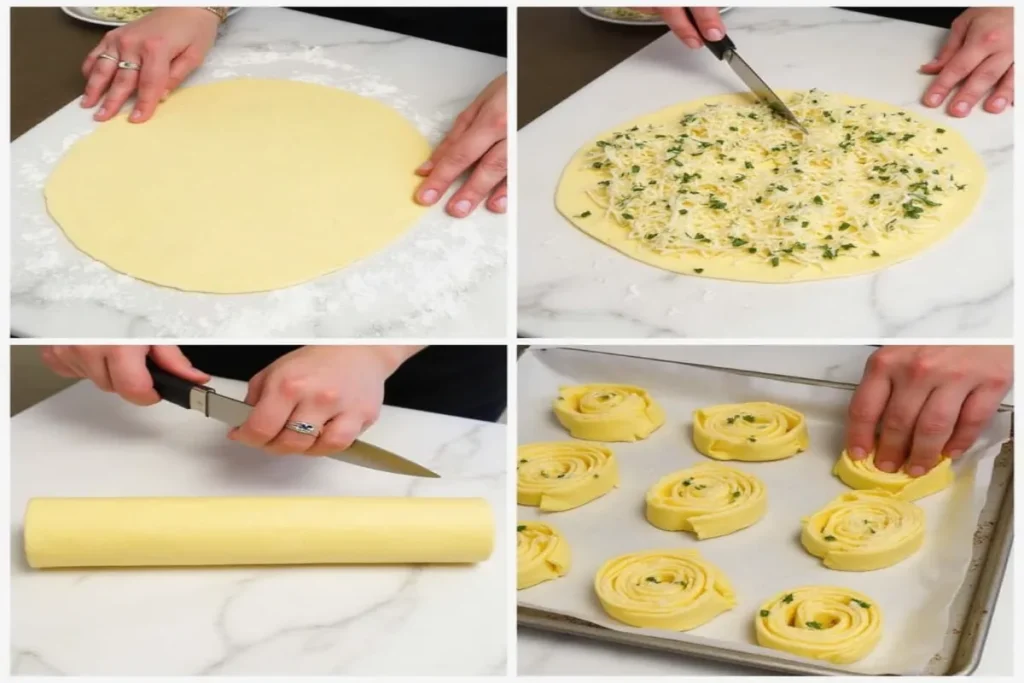
Ingredients
- 1 sheet puff pastry (approximately 8-10 oz), thawed but cold
- 4 oz cream cheese or Boursin, softened
- 1 cup shredded sharp cheddar or Gruyère cheese
- 2 tablespoons fresh herbs, finely chopped (parsley, chives, thyme)
- 1 small garlic clove, minced (optional)
- Salt and freshly ground black pepper, to taste
- 1 egg beaten with 1 tablespoon water (for egg wash)
Preparation
- Prepare Your Space and Ingredients: Begin by preheating your oven to 375°F (190°C). Line a baking sheet with parchment paper to prevent sticking. Ensure all ingredients are ready before unwrapping the puff pastry—this minimizes the time the dough spends at room temperature.
- Prepare the Filling: In a small bowl, combine the softened cream cheese or Boursin with minced garlic (if using), half the shredded cheese, chopped herbs, and seasoning. Mix until well blended. This creates your spreadable base layer.
Assembly
- Roll the Pastry: On a lightly floured surface, gently unfold the puff pastry sheet. If there are cracks, press them together gently with fingertips. Using a rolling pin, lightly roll the pastry into a rectangle approximately 10×12 inches, keeping the thickness even throughout.
- Add Fillings: Spread the cheese-herb mixture evenly over the pastry, leaving a ½-inch border along one long edge (this will help seal the roll). Sprinkle the remaining shredded cheese over the spread layer.
- Rolling and Sealing: Starting from the long edge opposite your clean border, begin rolling the pastry into a tight cylinder, similar to making a jelly roll. When you reach the clean edge, lightly brush it with egg wash to help seal the roll. Gently pinch the seam to secure it.
- Chilling (Optional but Recommended): For cleaner cuts, wrap the log in plastic wrap and refrigerate for 15-20 minutes. This firms the pastry and fillings, making slicing easier.
Rolling and Slicing
- Prepare for Cutting: Remove the log from refrigeration if chilled. With a sharp knife (not serrated), trim the uneven ends.
- Slice the Pinwheels: Cut the log into ½-inch slices, using a gentle sawing motion rather than pressing down, which can compress the layers. Place pinwheels flat side down on the prepared baking sheet, leaving about 2 inches between each to allow for expansion.
- Final Touch: Lightly brush the tops of the pinwheels with egg wash for a golden finish. If desired, sprinkle with a small amount of additional cheese or herbs.
Baking
- Into the Oven: Bake in the preheated oven for 15-20 minutes, or until the pinwheels have risen significantly and turned golden brown. Rotate the baking sheet halfway through for even browning.
- Cooling: Allow pinwheels to cool on the baking sheet for 5 minutes before transferring to a serving platter. This brief rest allows the layers to set, preventing collapse.
Serving
Serve warm or at room temperature. While freshly baked pinwheels offer the most impressive texture, they remain delicious for several hours after baking. Arrange on a platter with optional dipping sauce or accompanying garnishes.
Tips and Tricks
Make-Ahead Options
Puff pastry pinwheels offer excellent opportunities for advance preparation:
- Refrigerate Method: Prepare the entire roll, wrap tightly in plastic wrap, and refrigerate for up to 24 hours before slicing and baking. This actually improves flavor as herbs infuse the filling.
- Ready-to-Bake Method: Slice the pinwheels, arrange them on a parchment-lined baking sheet, cover with plastic wrap, and refrigerate for up to 8 hours before baking. Allow an extra minute or two of baking time if cooking directly from the refrigerator.
- Freezer Method: For longer storage, place sliced unbaked pinwheels on a parchment-lined baking sheet and freeze until solid (about 2 hours). Transfer to freezer bags or containers and store for up to 3 months. Bake directly from frozen, adding 5-7 minutes to the baking time.
Troubleshooting Common Issues
- Leaking Filling: Avoid overfilling, leave a proper border, and ensure the seam is well-sealed. Chilling before slicing helps contain fillings.
- Uneven Rising: Use a thermometer to confirm your oven temperature, as puff pastry is sensitive to heat variations. Ensure pinwheels are sliced to even thickness.
- Pale Results: If pinwheels aren’t browning properly, check that you’ve used egg wash and consider placing the baking sheet on a higher oven rack for the final few minutes.
Customization Ideas
The basic technique remains consistent while fillings can vary tremendously:
- Mediterranean: Use feta, sun-dried tomatoes, olives, and oregano
- Southwest: Incorporate pepper jack cheese, chopped green chiles, and cilantro
- Nordic: Try smoked salmon, dill, and cream cheese (add after baking)
- Italian: Combine mozzarella, basil, and a thin layer of pesto
- Sweet Versions: Spread with cinnamon-sugar, chocolate hazelnut spread, or fruit preserves
Nutritional Information
The nutritional profile of cheese and herb puff pastry pinwheels varies depending on specific ingredients used, but approximate values per pinwheel (assuming a 16-piece yield) are:
- Calories: 110-130 per pinwheel
- Fat: 8-10g (primarily from butter and cheese)
- Protein: 2-3g
- Carbohydrates: 7-9g
- Sodium: 150-180mg (varies significantly based on cheese selection)
Dietary Considerations: These Puff Pastry Pinwheels are naturally vegetarian when made with traditional cheeses. They contain gluten from the puff pastry and dairy from the cheese. For those with dietary restrictions, consider:
- Many commercial puff pastries contain only vegetable oils rather than butter, making them suitable for those avoiding animal fats (though not for vegans due to other ingredients)
- Gluten-free puff pastry alternatives are increasingly available in specialty stores
- Lactose-intolerant individuals might tolerate hard aged cheeses which contain minimal lactose
Serving Suggestions For Puff Pastry Pinwheels
Perfect Occasions
Cheese and herb pinwheels transition seamlessly between casual and formal settings:
- Cocktail Parties: Serve room temperature as elegant finger food
- Brunch Gatherings: Offer warm alongside quiche and fresh fruit
- Wine Tastings: Pair with appropriate wines based on cheese selection
- Holiday Appetizer Tables: Add festive herbs like rosemary and thyme
- Afternoon Tea: Include as the savory element among sweeter offerings
Complementary Pairings
Enhance the pinwheel experience with thoughtfully chosen accompaniments:
- Dipping Options: Offer warm marinara, honey mustard, or herb-infused olive oil
- Fresh Elements: Serve alongside simple greens dressed with lemon and olive oil
- Charcuterie Components: Include cured meats, olives, and pickled vegetables for a complete grazing board
- Beverage Pairings: Match with wines that complement your cheese selections—crisp whites for lighter cheeses, medium-bodied reds for sharper varieties
Presentation Ideas Of Puff Pastry Pinwheels
Elevate the visual appeal of your pinwheels with simple presentation touches:
- Arrange in concentric circles on a wooden board or slate plate
- Intersperse with fresh herb sprigs that echo the ingredients inside
- Serve in a bread basket lined with a colorful napkin for casual warmth
- For elegant service, place individual pinwheels on small plates with a drizzle of high-quality olive oil and microgreens
Frequently Asked Questions
Can I use homemade puff pastry?
Absolutely! Homemade puff pastry can yield exceptional results if you have the time and patience to prepare it. The classic technique requires repeatedly folding butter into dough to create hundreds of layers. For those interested in the process but short on time, “rough puff” or “quick puff” pastry methods offer a compromise, creating decent lamination with significantly less effort.
How do I prevent soggy bottoms?
Several techniques help ensure crisp, fully-baked bases:
- Thoroughly drain wet ingredients like roasted peppers or spinach before using
- Avoid overloading with fillings, which can release excess moisture
- Bake on a preheated baking sheet or pizza stone to jump-start bottom cooking
- Ensure your oven is fully preheated before baking begins
- Use parchment paper rather than silicone mats, which can insulate the bottom
Can I make them sweet?
Definitely! Sweet Puff Pastry Pinwheels follow the same basic technique but with dessert-appropriate fillings:
- Spread the pastry with softened butter, then sprinkle with cinnamon-sugar
- Layer with chocolate hazelnut spread and finely chopped nuts
- Spread with cream cheese and add a thin layer of fruit preserves
- For extra decadence, drizzle baked sweet pinwheels with simple glaze or melted chocolate
How far in advance can I make Puff Pastry Pinwheels?
For optimal quality:
- Unbaked rolls can be refrigerated for up to 24 hours
- Sliced unbaked pinwheels can be frozen for up to 3 months
- Baked pinwheels are best enjoyed same-day but remain good at room temperature for 8-10 hours
- Fully baked pinwheels can be refreshed in a 325°F oven for 3-5 minutes if they’ve lost their crispness
Conclusion
Cheese and herb puff pastry pinwheels represent that perfect intersection of impressive presentation and uncomplicated technique that makes them invaluable in any home cook’s repertoire. Their versatility allows endless customization while the basic method remains accessible even to novice bakers. Whether you’re looking to impress guests with minimal effort or simply want to elevate your everyday snacking, these spiraled delights deliver consistently excellent results.
The beauty of Puff Pastry Pinwheels extends beyond their appearance and taste—they invite creativity. Once you’ve mastered the basic technique, consider them a blank canvas for expressing seasonal inspirations or using ingredients already in your pantry. Each variation teaches something new about flavor combinations and working with puff pastry.
We’d love to hear about your adventures with this recipe! Share your favorite filling combinations, troubleshooting discoveries, or serving suggestions in the comments below. And don’t forget to subscribe for more recipes that balance impressive results with achievable techniques—because the most delicious food is the one you’re confident making again and again.


